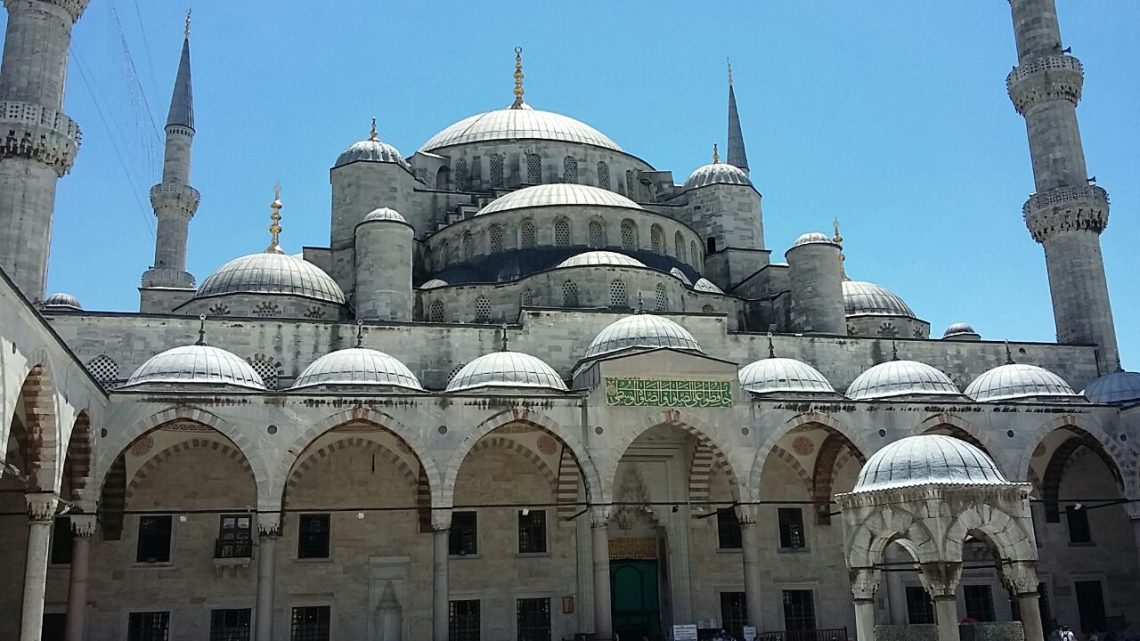One of the most historic places in Istanbul, about which you should also know, is the Sultan Ahmed Mosque. The mosque is popularly known as the Blue Mosque because the blue tiles adorn the walls of its interior. It was built from 1609 to 1616. The Sultan Ahmed Mosque is still popularly used as a mosque after the piece said the torrid and unfavourable result of the war with Persia. Sultan Ahmed first decided to build a big Mosque in Istanbul to come for prayer; it would be the first imperial mosque for more than 40 years, while his predecessors had paid for their mosques with the spoils of war.
Sultan Ahmed or Blue Mosque has 15 domes, one main minaret, six small minarets, and eight secondary domes. The design is the culmination of two centuries of Ottoman mosque developments. It incorporates some Byzantine elements of the neighbouring Hagia Sophia with traditional Islamic architecture and is considered to be the last great musk of the Classical period. The architect Staph Carmen Madonna synthesized the ideas of his masters in him, aiming for overwhelming size, majesty, and splendour. The facade of the spacious 4 escorts was built in the same manner as the facade of the Seneca water lay manila mosque. It’s for the audition of Kurtz on the corner domes. The court is about as large as the mosque itself, and it’s surrounded by a continuous Fault in our case, Radek. It has an ablution facility, and the central fountain is small relative to the courtyard. The monumental has a narrow gateway to the courtyard that stands out architecturally from the arcade; its semi-dome has a fine stalactite structure crowned by a small ribbed dome on a tall fellow bathe. Its historical elementary-school sybian mate tibi is used as a mosque information centre which is adjacent to its outer wall on the side of Hagia Sophia. This is where they provide visitors with a free orientation on the Blue Mosque.
Its grand courtyard welcomes the crowd that gathers for prayers. Like any other mosque, you park your shoes at the door, and women cover their heads if they don’t have a scarf. There are loners at the door. It’s nicknamed the Blue place of worship as a result of its blue tiles; blue could be a common modification. You’ll see geometrical styles and script. This explains why traditionally the Muslim world excelled at non-figurative art, whereas artists from Christian Europe focused on painting and sculpture of the humankind. Arabic penmanship usually shows excerpts from the sacred writing and quotes from Muhammad Peace be upon him, as a church would have Jesus and God front and centre. Large ceremonial candles flanked the Mihrab, which is the niche that points southeast to Mecca in the Kingdom of Saudi Arabia, where all Muslims face after their prayer services. By gender, the most hall is reserved for men, whereas the women’s section is in the back, well to some it’s demeaning to make women stand back. Muslims see it as a practical matter; women would rather have the option of performing the physical act of praying privately.
Related Articles:
Gangnam Style Dance at Bosphorus Cruise in IstanbulMall of Antalya TurkeyPictures by Syed Muhammad Nawaz Gilani
Whirling Dervish Dance in TurkeyDance at Dil Dil Pakistan Song in Turkey by Pakistani GuysTurkish Bosphorus Cruise Trip in Istanbul
Like churches have bell towers, mosques have minarets in step with Muslim tradition the Imam or prayer leader would climb at the highest of the minarets where it’s amplified by loudspeakers the call is always the same Allah Akbar God is great, Witness, there is only one God, Muhammad Peace be upon him is his Prophet, come join the prayer, come join the Salvation, when this happens to practice Muslims drop into a mosque face Mecca and pray to God then after a short service praising God workaday life resumes you.

